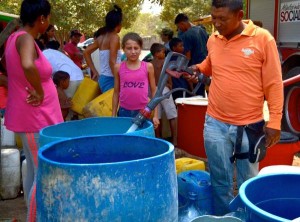By Aaron Martinez
Borderzine
EL PASO – As the drug war continues in Ciudad Juárez, one of the world’s deadliest cities just cross the border from the University of Texas at El Paso, the work of international students here has shown the effect drug-related violence has had on their everyday lives.
“In the past few years, violence and conflict have become a constant threat to the lives of many students on the U.S.-Mexico border,” said Alfredo Urzua, assistant professor of languages and linguistics at UTEP. “These students that are directly or indirectly exposed to violent events must find a way to balance their educational goals while living in an unstable and unsafe environment.”
The lights of Ciudad Juarez can be seen from the UTEP campus. Even though students from Juárez find a safe heaven in UTEP, violence is still very present in their lives. (Danya Hernandez/Borderzine.com)
Many of the students at the university come from or have close ties to Juarez. The impact the drug violence has had on the university can be seen since the start of the war. UTEP students have protested against the violence and helped families that have been affected. The violence had a direct impact on the university when two students were killed in 2010.
“We, the instructors (of ESOL courses), have found that the violence has entered our conversations about teaching courses and the curriculum,” Urzua said. “We have had, unfortunately, many situations in which the violence has affected our students lives directly or indirectly.”
Urzua and Laura Mendoza, a languages and linguistics graduate teaching assistant, are conducting a research project exploring the ways ESOL (English for speakers of other languages) students’ class writing assignments have been affected by the violence and how much students are willing to write about it.
“These are just the beginning stages of a project that we have started. This is a project that needs to be studied in-depth,” Urzua said. “This study will examine the relationships that exist between education in general and how education is related to something that it shouldn’t be related to, which is violence and social conflict.”
The research project started in fall 2010 and so far covers three semesters. They have used writing assignments from ESOL students to examine how the violence in México was reflected in the students’ work.
“We are studying the ways students use writing just as an expressive means to reconstruct their life experiences regarding violence and conflict,” Mendoza said. “The questions we are examining are whether conflict and violence are part of ESOL students writing and if so how frequently does this occur and what is the vocabulary they use to write about it.”
Some of the keywords Urzua and Mendoza looked for in the students’ writing assignments include violence, guns, murder, kidnap and drugs.
“For example the word kidnapping, we just searched for the word kidnap, that way we can include words like kidnapped, kidnapping and even missed words,” Mendoza said. “We counted the frequency of these words in the writing and the topics each writing was about.”
Out of the keywords, Urzua and Mendoza calculated the top five terms that were most frequent in the writings…
Finish reading Study examines how student writing reflects Mexican drug-war violence






Comment(1)
Study examines how student writing reflects Mexican drug-war … | NAINTELX
[…] link: Study examines how student writing reflects Mexican drug-war … Tagged with: ajaxify • check-if-user • enable-cookies • function • […]